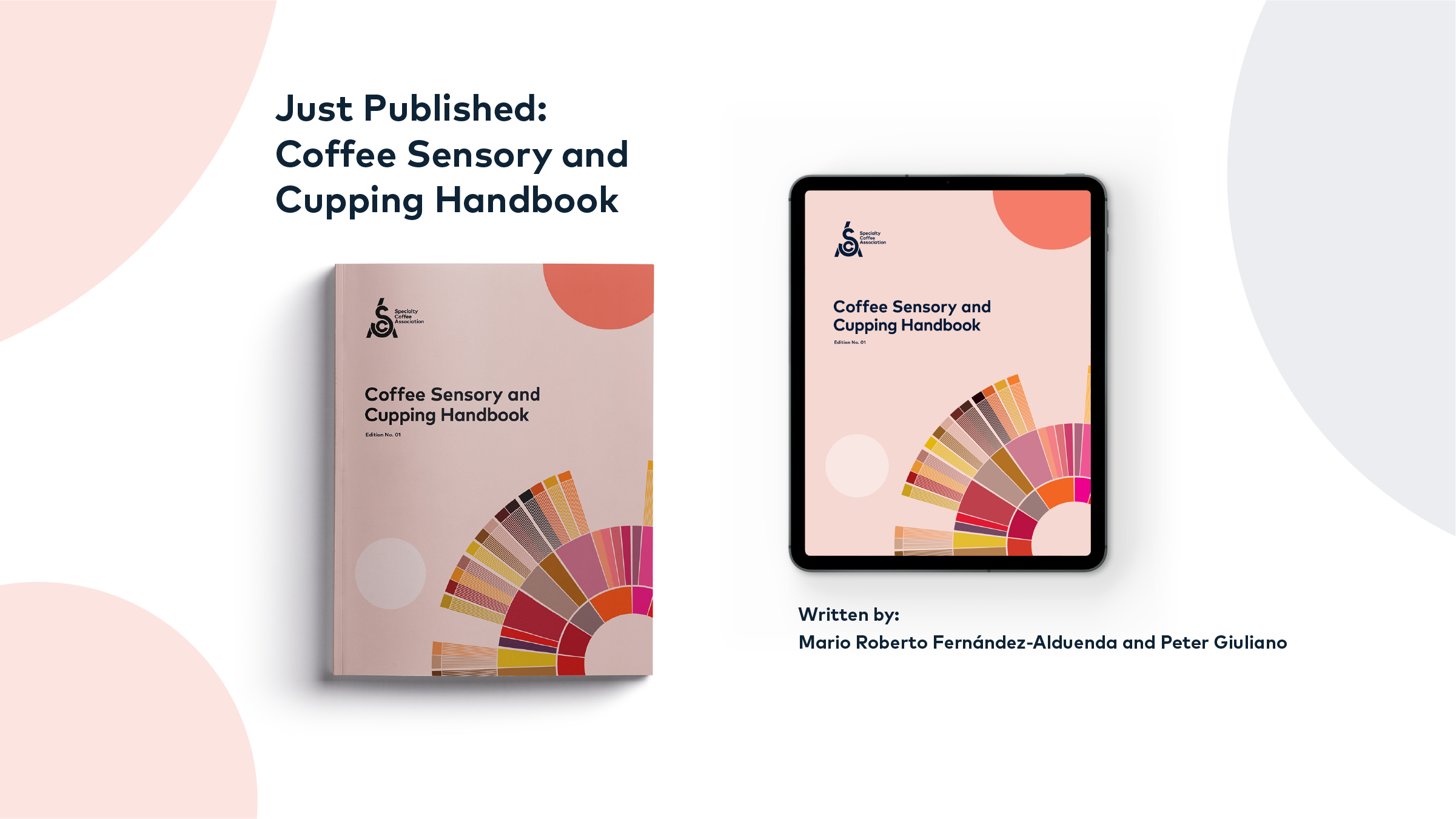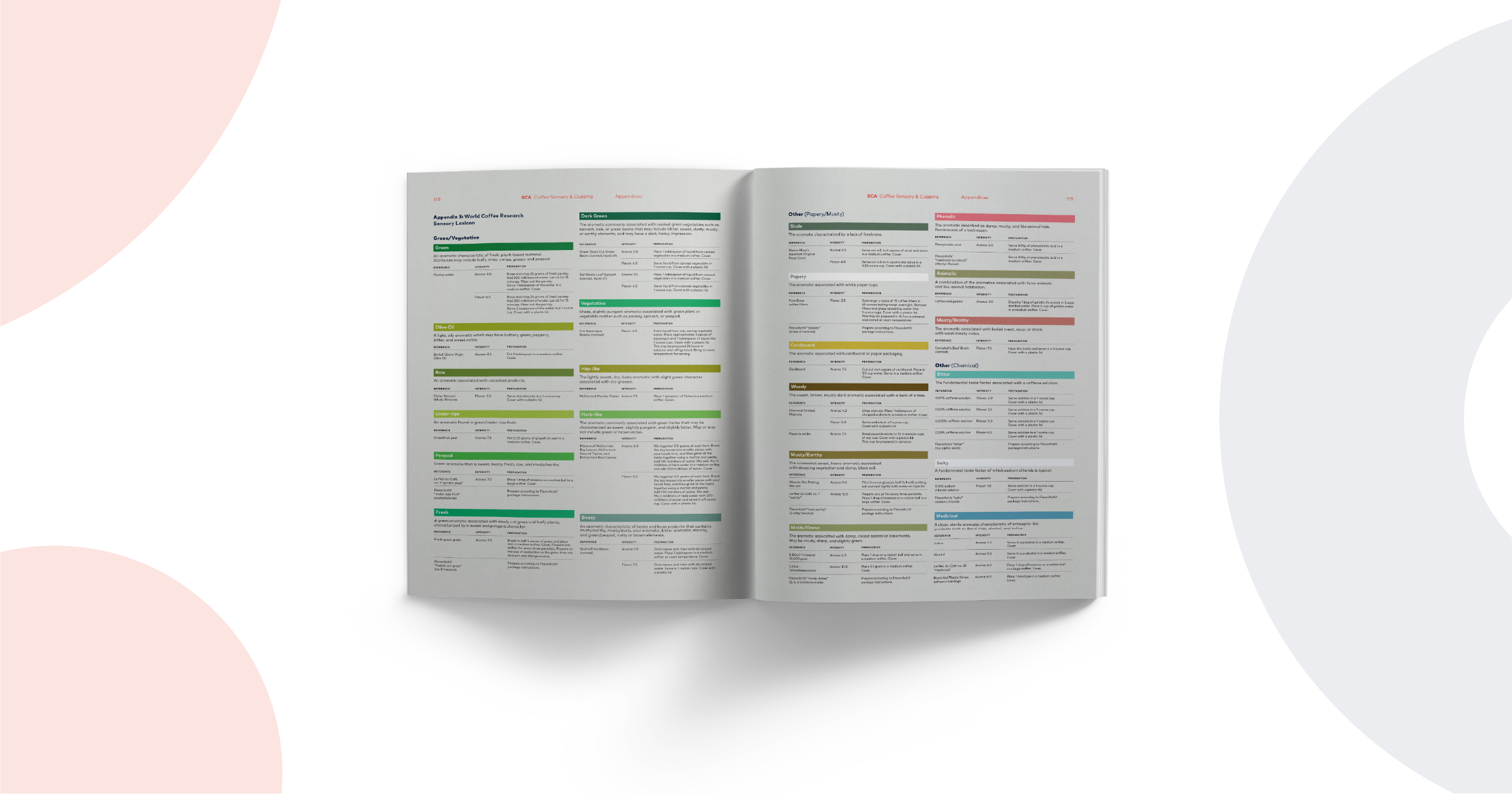Just Published: The New Coffee Sensory and Cupping Handbook
We are incredibly excited to announce the publication of the new Coffee Sensory and Cupping Handbook by Dr. Mario R. Fernández-Alduenda, Technical Officer at the Specialty Coffee Association, and Peter Giuliano, Executive Director of the Coffee Science Foundation and Chief Research Officer of the Specialty Coffee Association.
The handbook brings together 30 years of scientific advancements in the field of sensory science—which seeks to understand human perceptions of smell, taste, and mouthfeel—and combines these with cupping practices developed by the SCA and new advances in flavor language exemplified by the recent revision of the Coffee Tasters' Flavor Wheel. It is the most complete and well-researched work on this topic to date, and is intended to provide an approachable and practical guide to the complexity of coffee and sensory science, to any and every coffee professional.
An early release of the print edition will be launching on International Coffee Day, October 1, at the Specialty Coffee Expo in New Orleans. The print and digital editions will officially launch in the SCA Store late October.
Generally speaking, coffee quality was evaluated solely on appearance until the latter part of the nineteenth century. Bean size, place of origin, and defects in the sample were considered more highly than the actual taste of the coffee, which to someone in the year 2021 sounds counterintuitive. Everything changed when a San Francisco coffee trader called Clarence E. Bickford developed a systematic method for “cup testing” coffee. By including this method in his grading protocol, Bickford determined that, actually, taste could not accurately be determined from color or bean size. As you can imagine, this revelation started a bit of a revolution in coffee trading.
But it wasn’t until the beginning of the specialty coffee movement of the 1960s and 1970s that coffee sensory evaluation was practiced by anyone other than green traders and roasters. The publication of Ted Lingle’s The Coffee Cupper’s Handbook in 1986 brought fresh ideas in the field of sensory analysis and laid a foundation of understanding of coffee quality and attributes. Sensory analysis has gone hand-in-hand with coffee ever since and has evolved alongside the industry. The new Coffee Sensory and Cupping Handbook, a year in the making, introduces new tools to help coffee professionals understand the complexity and value of their product, while providing valuable context to help readers understand their own coffee sensory experience.
“It is no exaggeration to say the specialty coffee industry is founded on the concept of flavor. And since flavor is perceived by the senses of smell and taste, the concept of sensory evaluation, communication, and understanding is critical to the skill set of any coffee professional and is essential to any coffee business.”
The goal of the Coffee Sensory and Cupping Handbook is to educate sensory professionals on the basics of sensory science and the sensory tools used in any coffee profession. The handbook is also intended as a guide for coffee sensory scientists to understand the unique needs and tools of the coffee trade, and to provide a bridge between the coffee sensory community and the broader sensory community.
In reading, you will learn:
How to apply sensory science and techniques to coffee using the most researched and up-to-date tools and techniques.
The history of sensory analysis and how it became a key component of the specialty coffee industry.
About coffee’s taste, odor, and texture perception from a chemical, physiological, and neurological perspective.
How bias and error affect sensory perception, and how to factor that into your own sensory analysis practice.
Mark your calendars for late October and make sure to pick up your own digital or print version of the Coffee Sensory and Cupping Handbook from the SCA Store! We hope you enjoy an insightful new guide on your sensory journey.
About the Authors
Dr. Mario R. Fernández-Alduenda
From a coffee producing family in Mexico, Mario R. Fernández-Alduenda has tried to understand coffee for almost 30 years, under the light of food science. He has played many roles along the chain, from processor to coffee shop owner, but has mostly focused on the study of coffee flavor, how it is perceived and appreciated, and how it is formed. He is the Technical Officer of the SCA, which he joined in 2020.
Peter Giuliano
Peter Giuliano is the Executive Director of the Coffee Science Foundation and Chief Research Officer of the Specialty Coffee Association. With more than 30 years’ experience in the coffee trade, his focus now is on promoting research and scientific inquiry on coffee, and bringing evidence-based insights to the coffee industry.


